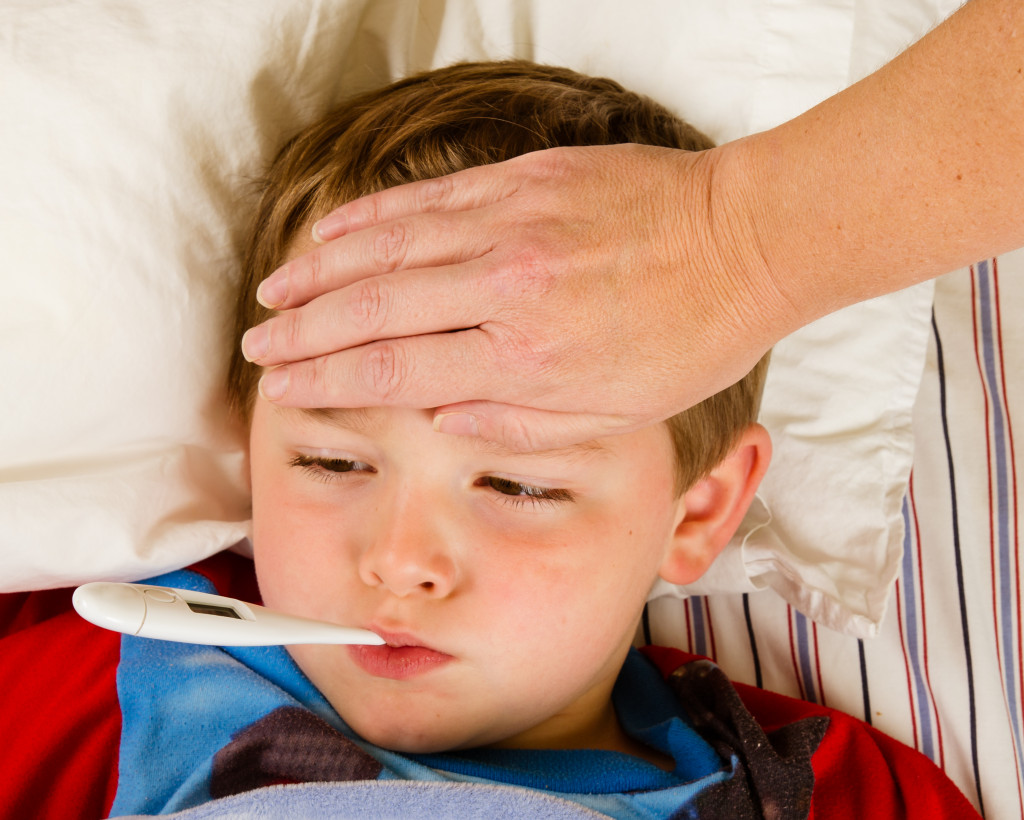A fever, a body temperature higher than 100.4°F (38°C), is an important signal that the body’s immune system is fighting off infection or inflammation. Having a fever can be distressing for both parents and children alike. This is especially true when there is no definitive diagnosis as to what is causing the fever.
Knowing what causes high fevers is crucial so you can take the steps necessary to treat them and determine if further medical attention is needed. The treatment for each cause of fever will also vary, so it’s essential to get a correct diagnosis.
This blog post will review the most common causes of fever in children and what to look out for.
Common Causes of High Fever in Children
Most of the time, high fevers are caused by viral infections such as colds, flu, and other respiratory illnesses. If your child has a fever, it’s essential to know the most common causes so you can get an accurate diagnosis and begin treatment as soon as possible. Here are some of them:
Viral infection
Viruses are one of the most common causes of high fever in children. Viral infections such as colds, flu, stomach bugs, or respiratory viruses can all cause fevers. Usually, these types of infections are mild. They will go away independently without any medical intervention or particular medications. The best way to treat these types of conditions is to keep your child hydrated and provide them with plenty of rest.
Bacterial infections
Bacterial infections can also cause high fevers in children. Common bacterial infections that may cause fevers to include ear infections, urinary tract infections (UTIs), strep throat, and pneumonia. These infections often require antibiotics for treatment since they cannot be resolved on their own as viral infections can. If you suspect that your child has a bacterial infection, it’s essential to contact your doctor immediately for further evaluation and treatment guidance.
Rare medical conditions
In rare cases, other medical conditions may cause high fever in children, such as autoimmune disorders or certain cancers like leukemia or lymphoma. If your child has had recurrent episodes of a high fever that don’t seem to have an apparent cause or don’t resolve quickly with typical treatments like rest and fluids, then it is essential to contact your healthcare provider right away so they can evaluate your child further and determine if additional testing is needed.
What to do
Now that you know the most common causes of high fever in children, the next step is to take action. Of course, if the fever is accompanied by other symptoms that concern you, it’s vital to seek pediatric urgent care services immediately. If the fever seems mild and your child is otherwise doing well, home care measures may help. Here are some of the home care steps you can take to help bring down your child’s fever:
Give your child plenty of fluids
Hydrating will help them stay comfortable and ease any symptoms they may be having from the fever. If your child refuses to drink, you can try popsicles, soup, or other ways to get some fluids in their system. It’s also important to keep a close watch on your little one and consider contacting their doctor if the fever persists for more than a few days. Even with the higher temperature, simple TLC can go a long way in helping your child feel better and make it through the worries of having a fever.
Provide rest and comfort measures
The key thing to do when your child is running a high temperature is to provide rest and comfort measures. This may mean ensuring they are wrapped in blankets and warm clothes, making up a bed on the sofa so they can stay close by, or letting them take extra naps throughout the day. Also, comforting touches such as holding your child’s hand or giving them gentle head rubs can also help keep their spirits up despite feeling unwell.
Give fever-reducing medications

If the fever is persistent, turning to medication can help reduce their discomfort and help bring down their temperature. There are a number of fever-reducing medications available, like Ibuprofen or Paracetamol, that you can use to lessen the severity of your child’s symptoms and lower the fever itself. As always, when considering giving any medication to a child, it’s important to check the dosage and speak with a doctor before administering anything.
Final Thoughts
High fevers can be very frightening, but they’re usually caused by common viral or bacterial infections that don’t require antibiotics. However, it’s still important to pay close attention to your child’s symptoms because there could be underlying conditions causing their temperature to spike. If your child’s fever persists for more than 24 hours or if you notice any other concerning symptoms, such as difficulty breathing or abdominal pain, then it’s best to consult your pediatrician immediately. With proper care and attention, you can help get your little one back on the road to recovery soon!


